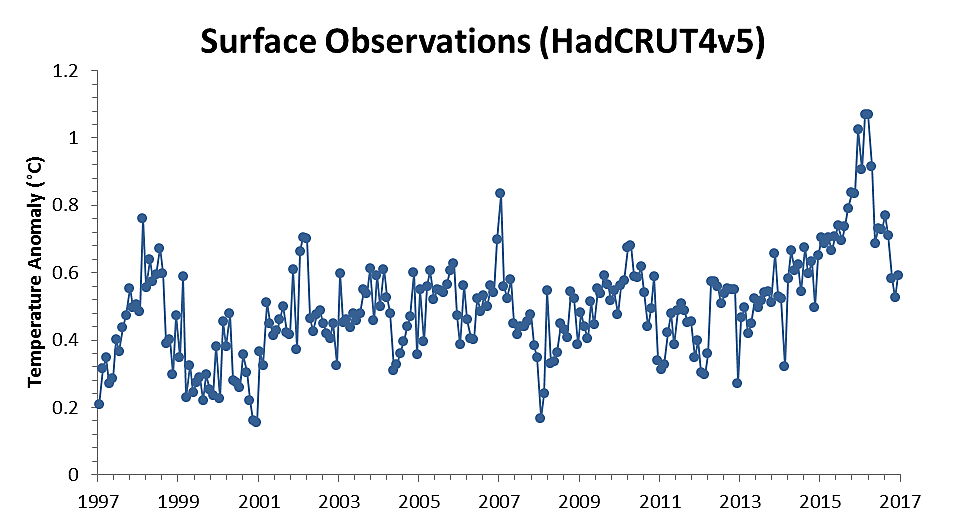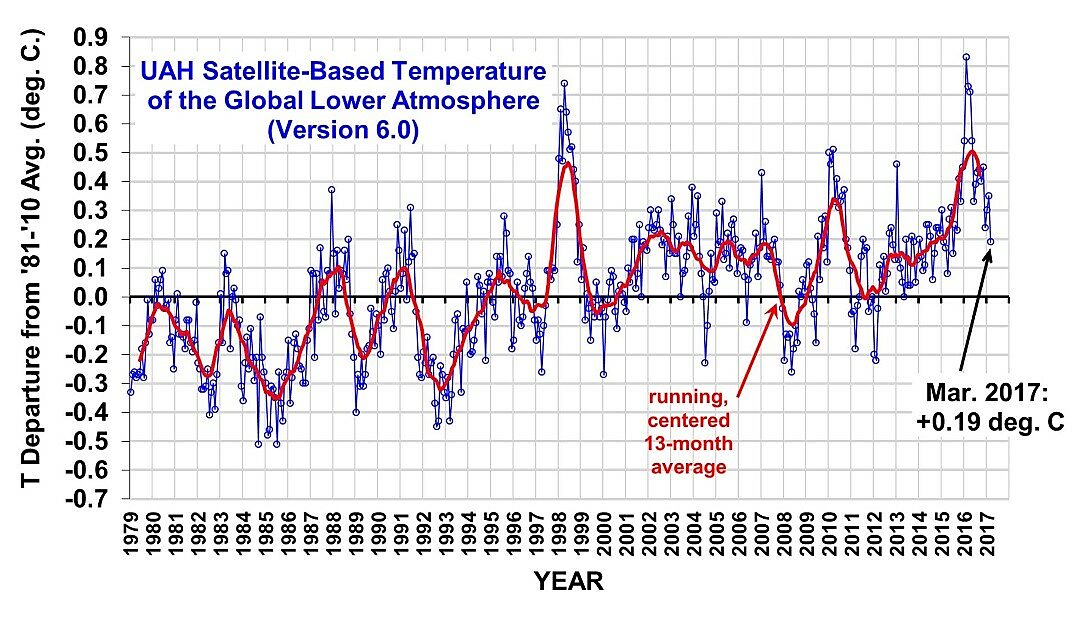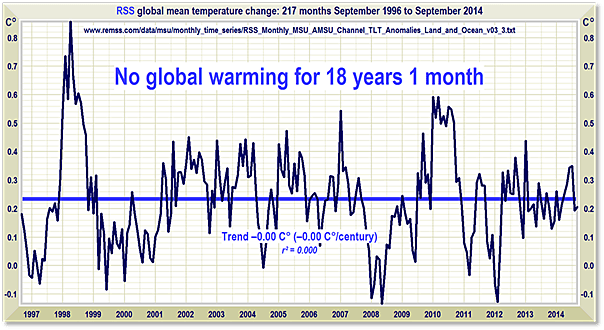There’s been a small gaggle of news stories about a new paper by Iselin Medhaug and colleagues in the May 4 issue of Nature that concludes that climate models are just fine and their sensitivity to carbon dioxide is spot-on.
If one adjusts the data observed during the balance of the “hiatus” in warming, by filling in hot data where there was none, and adjust the model predictions downward that would be the likely result. I’ve gone through the Abstract line-by-line, so you can see these papers the way a climate scientist might.
Between 1998 and 2012,
Actually, the pause was between 1997 and 2014, as shown in even the warm-revised data from the Climate Research Unit from the University of East Anglia:
a time that coincided with political negotiations for preventing climate change,
It appears as though this was put in to signal they have no problem mixing politics with science. They are obviously signaling that the 1998–2012 “hiatus” (well, actually, 1997–2014) isn’t a good excuse for Donald Trump to walk away from the Paris Agreement, which does nothing measurable to stop climate change in the 21st century.
the surface of Earth seemed hardly to warm.
See graph above. It didn’t “seem hardly;” it simply didn’t. And it wasn’t just at the surface. Satellite data show that there was no warming in the lower atmosphere from 1995–2014:
This phenomenon, often termed the ‘global warming hiatus,’ caused doubt in the public mind about how well anthropogenic climate change and natural variability are understood.
Well, isn’t the public silly? Does it have a “mind?” No right-thinking scientist would question the climate models! Just ignore federal climatologist Ben Santer and 16 coauthors published this in the Journal of Geophysical Research in 2011:
Our results show that temperature records of at least 17 years in length are required for identifying human effects on global-mean tropospheric [lower atmospheric] temperatures.
The 17th author of that paper is given as F.J. Wentz, or Frank Wentz of Remote Sensing Systems, one of the major centers publishing—you guessed it—global-mean tropospheric temperatures. By late in 2014, here’s what his own data showed:
Hint: there’s not one use of the word “satellite” in this paper!
Here we show that apparently contradictory conclusions stem from different definitions of ‘hiatus’ from different datasets.
Can you guess they’re going to manipulate the climate data, timeframe, and model output to show that everything fits?
A combination of changes in forcing, uptake of heat by the oceans, natural variability and incomplete observational coverage reconciles models and data.
See above.
Combined with stronger recent warming trends in newer datasets,
Meaning the “pause buster” dataset put out by the U.S. National Climatic Data Center, which substituted sea surface temperature (SST) data that became successively warmer when compared to the satellite-derived ocean data right at the beginning of the pause. They had to do this in a hurry because the team that revised the data had another revision in the works that lowered the successive warming, which would have destroyed the already marginal significance of the pause buster dataset. Also meant is the NASA temperature history (which we show later in this paper) in which they extend the effect of the northernmost land stations up to 1200km out into the Arctic Ocean. They had to know the basic physics that temperature over a mixed ice-water ocean must be close to freezing, regardless what the onshore temperature is, they likely went with it because it shows a dramatic warming of the Arctic Ocean based erroneously on onshore data.
we are now more confident than ever that human influence is dominant in long-term warming.
Data and model output were tortured, and they confessed they were right after all.



